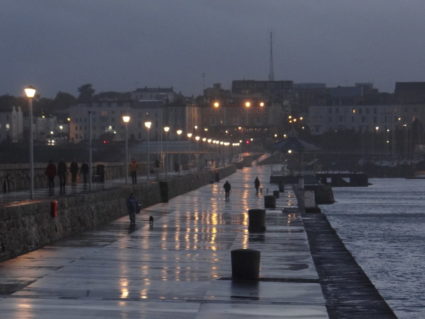
A Spanish high court received formal allegations against Iglesias on Jan. 5, but Iglesias denied the accusations on Instagram, calling…

Our September pick for the PBS NewsHour-New York Times book club Now Read This is "Conversations with Friends" by Sally Rooney. Become a member of the book club by joining our Facebook group, or by signing up to our newsletter. Learn more about the book club here.
Sally Rooney's debut novel "Conversation with Friends" is set in different areas of Dublin, Ireland, where Rooney herself lives. While the character of Frances comes from a blue-collar background, Nick and Melissa, the older couple with whom she becomes entangled in the book, live in Monkstown, which Rooney describes as a "relatively wealthy coastal suburb" south of the city.
"I wanted Frances to feel that Nick and Melissa inhabited a very different and much richer part of the city," Rooney said. Meanwhile, Frances' finances are precarious and she isn't sure she ever wants to get a job. Instead, she spends her energy, at least in part, on making herself seem likable. "I felt excited, ready for the challenge of visiting a stranger's home," Frances narrates in the book, "already preparing compliments and certain facial expressions to make myself seem charming."
Rooney said this line was added in a much later draft, when she was trying to slow the book's opening down. "I find that when I force myself to slow the pace down a little, I can discover sensory and psychological details I missed or elided in the first draft," she said.
Read more of what Rooney was thinking as she wrote "Conversations with Friends" in the annotated page of the book below.
Bobbi and I first met Melissa at a poetry night in town, where we were performing together. Melissa took our photograph outside, with Bobbi smoking and me self-consciously holding my left wrist in my right hand, as if I was afraid the wrist was going to get away from me. Melissa used a big professional camera and kept lots of different lenses in a special camera pouch. She chatted and smoked while taking the pictures. She talked about our performance and we talked about her work, which we'd come across on the internet. Around midnight the bar closed. It was starting to rain then, and Melissa told us we were welcome to come back to her house for a drink.
We all got into the back of a taxi together and started fixing up our seat belts. Bobbi sat in the middle, with her head turned to speak to Melissa, so I could see the back of her neck and her little spoon-like ear. Melissa gave the driver an address in Monkstown and I turned to look out the window. A voice came on the radio to say the words: eighties . . . pop . . . classics. Then a jingle played. I felt excited, ready for the challenge of visiting a stranger's home, already preparing compliments and certain facial expressions to make myself seem charming.
The house was a semi-detached red-brick, with a sycamore tree outside. Under the streetlight the leaves looked orange and artificial.
Editor's Note: This excerpt corresponds to page 3 from the American paperback edition of "Conversations with Friends."
Sustain our coverage of culture, arts and literature.